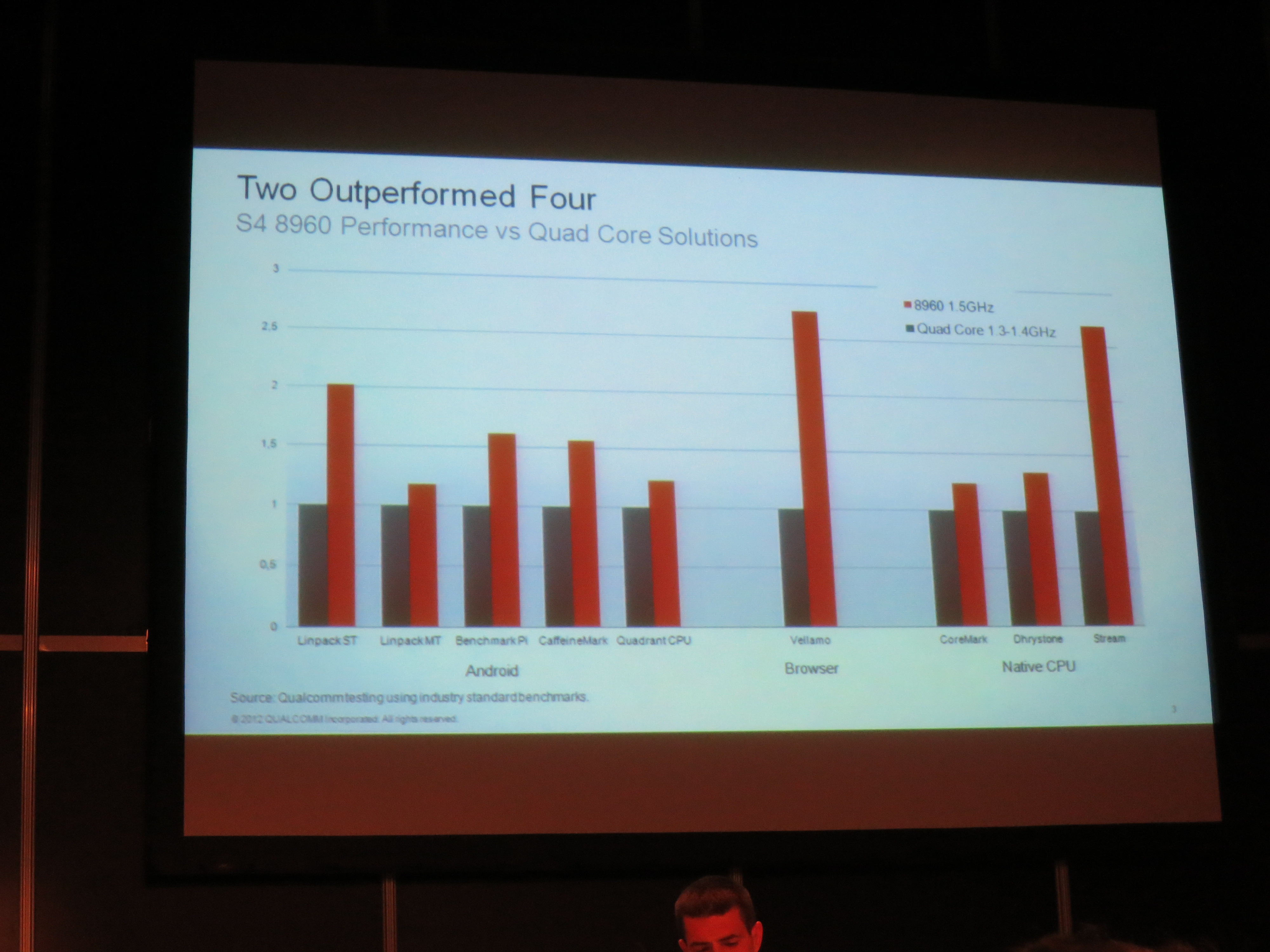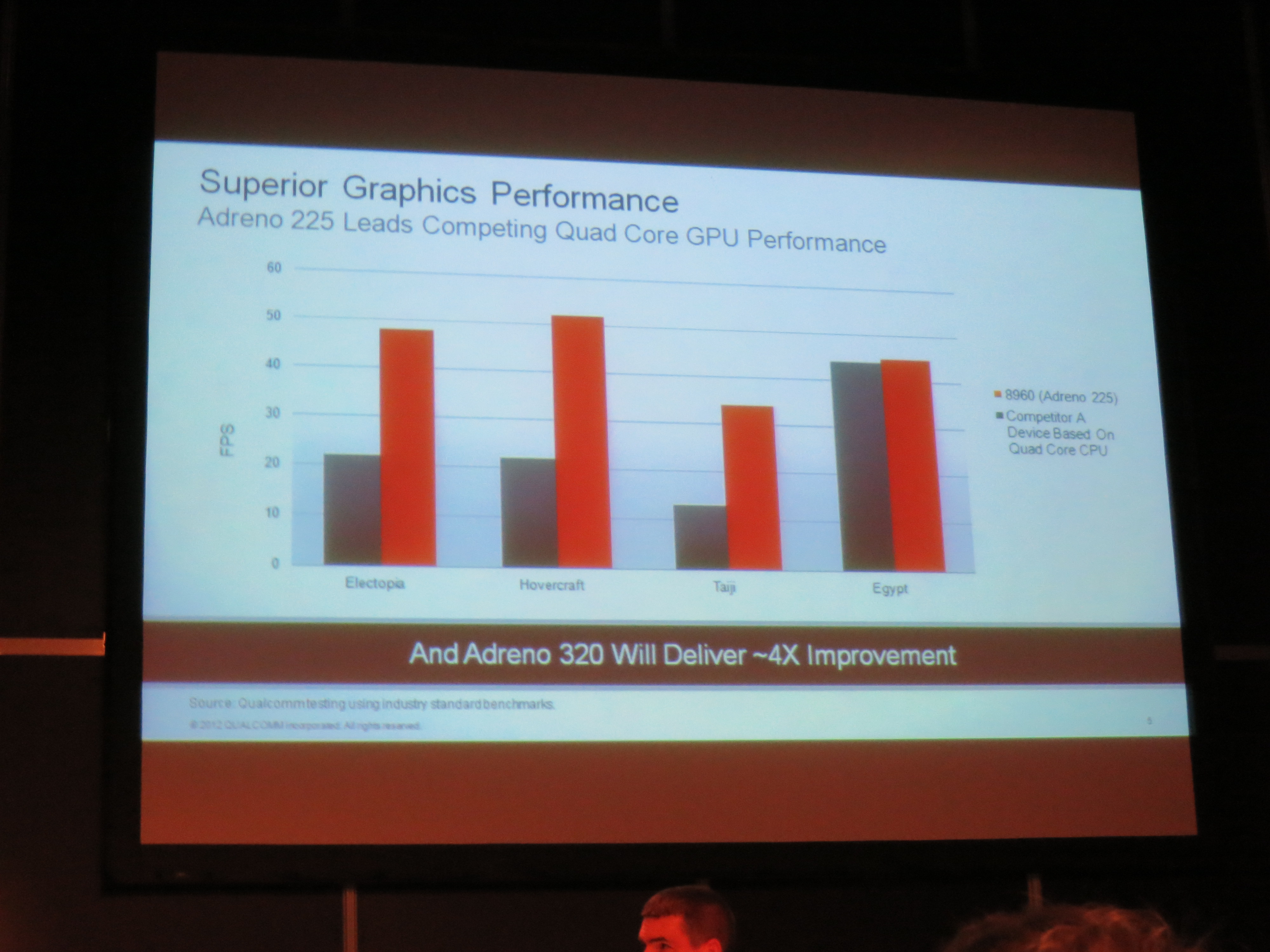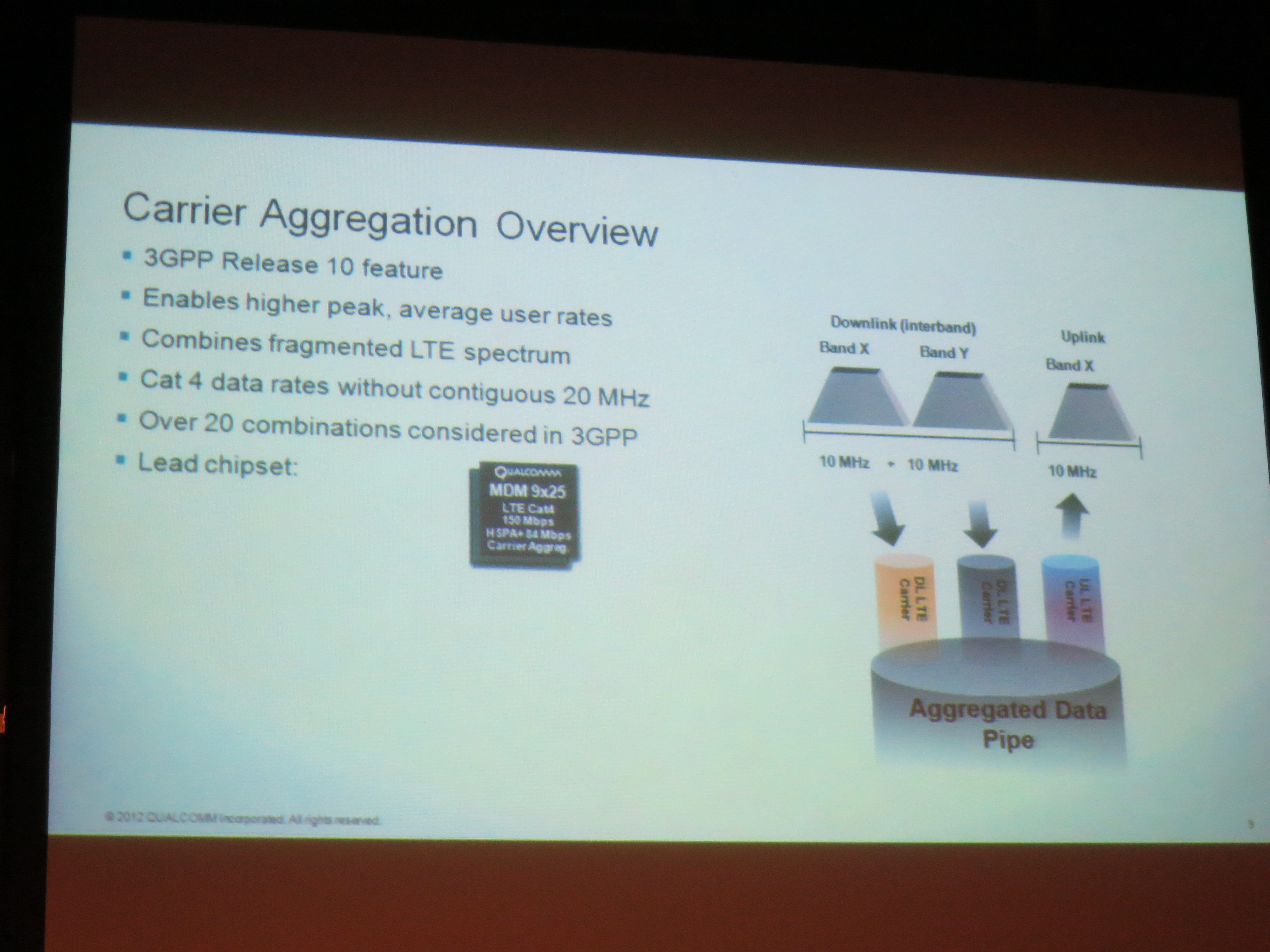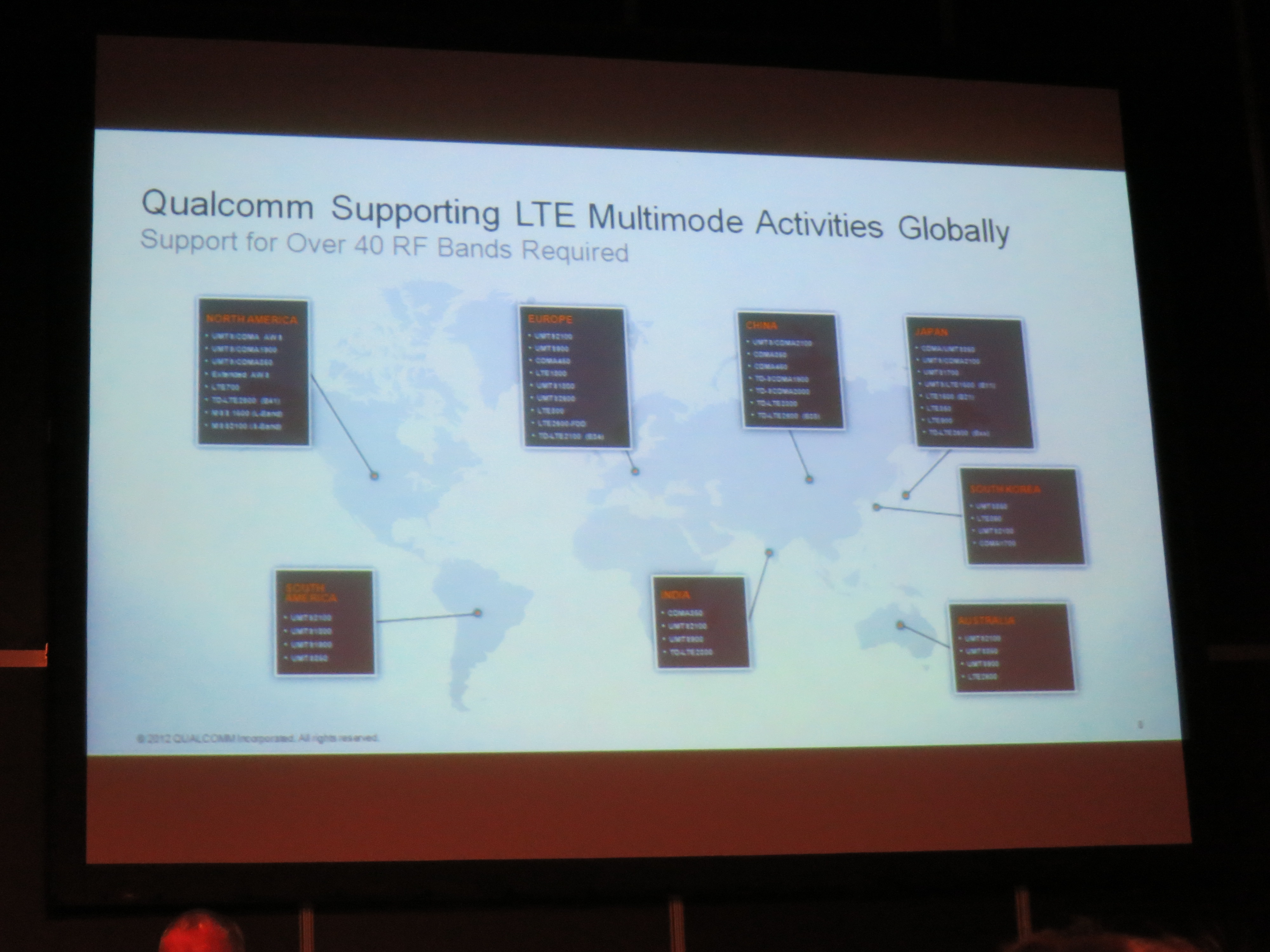Qualcomm Talks About S4 Pro Chip Tech & Future Outlook
Qualcomm has big plans for its next-generation of mobile chip technology.
Qualcomm provided some interesting bits of information on its current plans. According to the company, its current Snapdragon S4 flagship, the MSM8960, already blows the competition away in performance. However, in the world of mobile, power is as much as a concern.
In the case of Qualcomm, higher performance doesn't translate into greater thermal inefficiency, as the slide above shows why the company is the incumbent in the embedded/mobile SoC market. This is supposed to illustrate how hot the competition gets inside a phone when subjected to a heavy workload over time. The Qualcomm's phone is on the left side and, as you can see, as you move out to 20 minutes, it remains very cool. Meanwhile, the competition gets pretty toasty. Qualcomm won't go on record as stating who they're exactly comparing themselves to, but from the hints that were provided, it's clear this is a head to head against Ti and Nvidia.
What's more interesting is the announcement of the S4 MSM8960 Pro, which is poised to ratchet up graphics performance up to 4X by leveraging the new Adreno 320. However, faster gaming performance isn't the only highlight. Originally, the MSM8960 was touted at speeds up 2.0 GHz, and the Pro version is going to provide Qualcomm an opportunity hit that high target. Currently, the non-Pro version is cited as a 1.5 GHz dual-core solution.
Admittedly, the most interesting part of the briefing had nothing to do with raw computational performance. Rather, it was a slide offered up by the modem team, which showed an innovative solution to aggregate frequencies to optimize LTE bandwidth. Right now, the cellular frequencies are often licensed in a scattered mode, and it can be difficult for carriers to allocate a full 20 MHz to achieve the best performance. However, Qualcomm's idea is to patch a bunch of smaller bands together to do just that, kind of bundling a bunch of DSL lines together to achieve fiber optic bandwidth. In theory, this should allow greater flexibility for carriers in rolling out LTE, but this has its risks. If a cellular operator choose to implement what Qualcomm coins Gobi LTE, it's only going to work on a Snapdragon-powered phone. With the competition's SoC and baseband modem, LTE will be limited to the band with the widest frequency range.
Stay tuned for more coverage from Mobile World Congress 2012.
Get Tom's Hardware's best news and in-depth reviews, straight to your inbox.
-
omega21xx These are the chips I really can't wait for. I may just upgrade from my EVO 3D for a phone with one of these.Reply -
mathab "Currently, the non-Pro version is cited as a 1.5 GHz quad-core solution." isnt it dual-core?Reply -
omega21xx They have a very strange line of SoC's coming out. There will be the ones with Adreno 225 and these ones with 320. I think the dual core chip that are named closely, will have the 225, and the quads will have the 320. Then again, I haven't found an article that has made anything completely clear about this line of chips.Reply -
From the thermal comparison you can clearly distinguish the 2 competitors: Motorola RZR - OMAP4 4430 2 x 1.2Ghz and Galaxy Note - Exynos 4412, 2 x 1.4GHz - not even close to your guesses - "it's clear this is a head to head against Ti's OMAP 5 and Nvidia's Tegra 2."Reply
OMAP5 is not even launched, there are no samples out there that can get in the hands of Qualcomm. And if it did, the OMAP5 would obliterate the S4 from a thermal point a view because at this point it can only run to 800Mhz per core vs 1.5 Ghz of the S4. -
SkyWalker1726 Qualcomm Always failed to impress me , i owned a desire , that was weaker in every way when compared to a GS , and then a Sensation < GS2 ....Reply
the adreno 220 was supposed to be a beast , but even Asphalt 6 didn;t feel really fluid&Smooth ...
won't go for qualcomm Chipset again . i'm happy that HTC dropped Qualcomm for Tegra :) Tegra3 will be in my next phone ! -
psupanova Qualcomm are going to be top dog this year, with only Samsung left to spoil the party. Tegra3 needs to go to 28nm, Texas OMAP5 has to hurry up.Reply -
willard SkyWalker1726Qualcomm Always failed to impress me , i owned a desire , that was weaker in every way when compared to a GS , and then a Sensation < GS2 ....the adreno 220 was supposed to be a beast , but even Asphalt 6 didn;t feel really fluid&Smooth ...won't go for qualcomm Chipset again . i'm happy that HTC dropped Qualcomm for Tegra Tegra3 will be in my next phone !Tegra 3 was just as big a letdown as Tegra 2. Nvidia needs to learn how to make mobile SoCs before Tegra 4 is the third verse in this sad story.Reply




